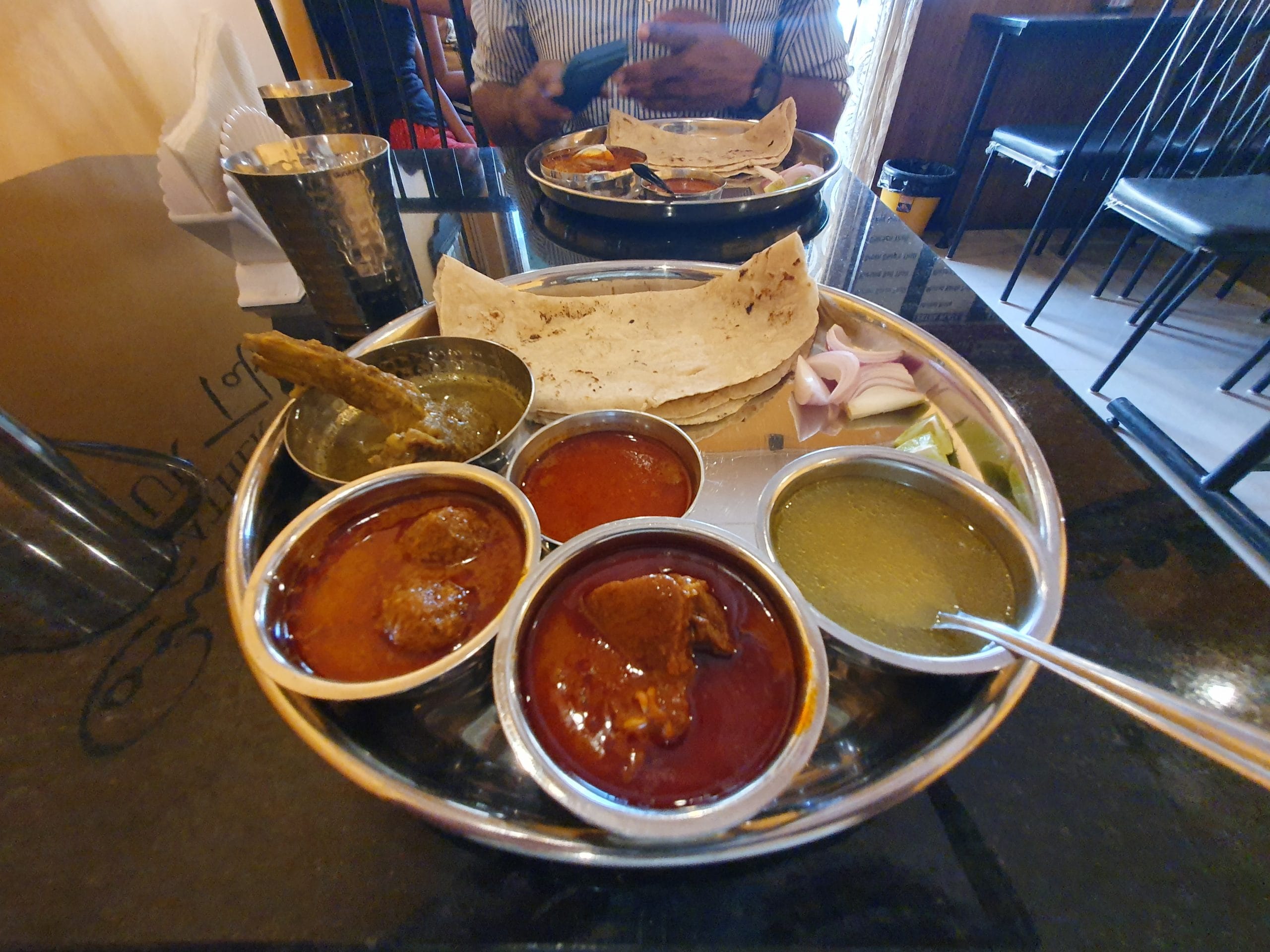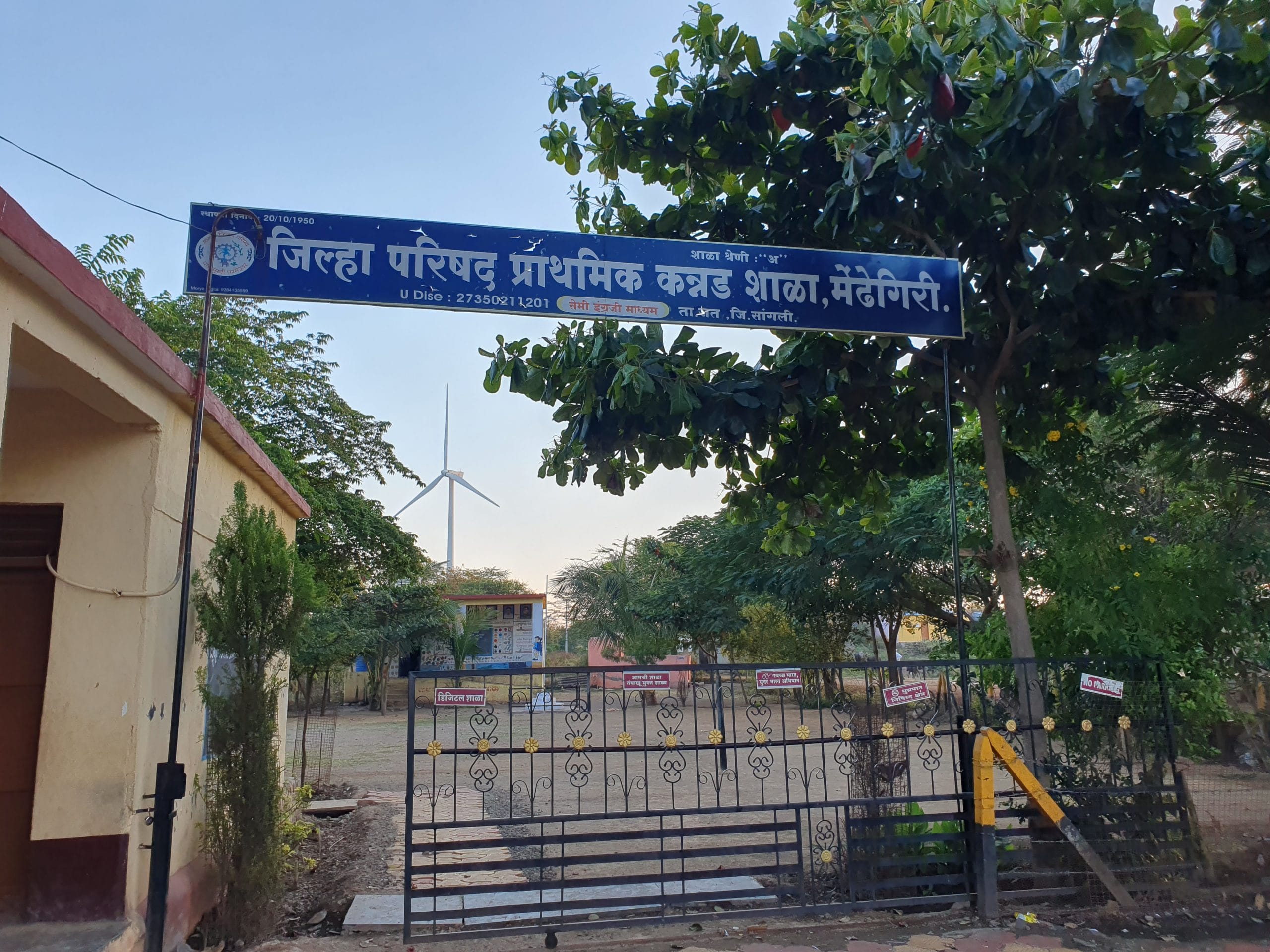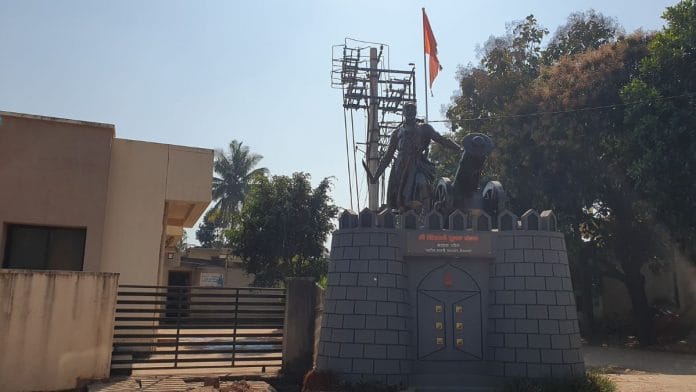Jagadish Kunte is a retired cartoonist at Belagavi-based Marathi newspaper, Tarun Bharat, who created most of his works inspired by Bal Thackaray. The publication he worked for catered to the Marathi-speaking population of Belagavi who have a long-standing demand to be included in Maharashtra but matters closer to home are very different for Kunte.
“I am a Marathi guy and my wife comes from Haveri in interior Karnataka, educated in Kannada but she can speak both the languages. Many such marriages take place,” Kunte says, giggling with boyish charm.
A few kilometres east of his home, DS Chougale, a noted playwright, artist and author, sits in his hall decorated with plaques and citations in both Marathi and Kannada. It is hard to tell his native tongue as he effortlessly glides between the two languages to explain how similar the two cultures were. “Growing up, my mother only spoke in Kannada but all her friends were Marathi. They did not speak each other’s languages but understood each other,” he says, reminiscing his younger days.
There are hundred such stories in the bustling city of Karnataka’s Belagavi and its border villages that are a mêlé of Marathi and Kannada cultures with history dating back to over a millennium and people in these parts have carried this duality with ease. The nose ring, style of wearing sarees, the Gandhi topi, love for ‘Tamasha’ (Marathi theatre) or Savji food among many more are just some of the commonalities in this hybrid culture, which has more similarities with Maharashtra than the southern districts of Karnataka.
Since the reorganisation of states in 1956, several of these villages have upheld demands to be included in Maharashtra as they argue that the number of Marathi speakers outnumber Kannadigas, adding to the constant friction between two of India’s biggest growth engines.
Also read: Belagavi is a tightrope for BJP, high stakes on both sides of Karnataka-Maharashtra border
‘Kannada aayi, Marathi mousi’
Order for bhakri and you will get jolada rotti. Call it puran poli or hurnad holige, depending on the household you visit, but the dish is the same sweetbread. Arguably, the most popular cuisine known to tourists are saoji khanavalis (Savji), which has more spices in one meal than many eat in a lifetime and enough oil floating on top to start a war. It was brought down by a small community in Maharashtra.
“Both sides have shared food habits and it is part of their staple diet even if it is known by different names,” Shivanand Hiremath, a former librarian in Khanapur, about 30 kms from Belagavi, says.
At Kshatriya Savaji hotel in Belagavi’s Khasbagh, Vishnu Subhash Latkan and his brother take time to explain each dish to the customers either in Kannada, Hindi or Marathi. “Modl red curry thinni matth green curry. Illandra maja barudill ri (first eat the red curry and then the green one or you won’t enjoy it,” Latkan says, explaining the ‘correct way’ to eat a mixed thali and in the process speaking the distinct dialect of Kannada, Marathi, English and Hindi in one short sentence.

In the border region, even Kannada speakers use metrics in Marathi such as ‘dedh’ ‘adi’ ‘poune,’ Kunte says, which is a force of habit since all accounts were earlier kept only in Marathi. Shobha Shivaprasad Nayak, in her research paper titled A Reflection on the Cultural Synthesis of Karnataka– Maharashtra Border Region, calls this the ‘border culture.’ A blend of these very similarities has over time become a way of life on its own. “Kannada aayi, Marathi Mousi, (Kannada is mother, Marathi is her sister),” Hiremath says.
In Jath taluka of Maharashtra’s Sangli, native Kannada speakers are fluent in Marathi but they have been fighting to be included into Karnataka for better educational and employment opportunities, a constant source of friction between Kannaigas and Marathis. In Karnataka’s Yelluru, those wanting to be included in Maharashtra are doing so for linguistic reasons that have shaped the politics and discourse of this region.
“There was a practice about 30-40 years where boys from Marathi households were taught in Kannada and all girls would get a Marathi education as they would be married off to a family in Maharashtra,” Kunte says.
However, he says that now there is a bigger trend of sending students to English medium schools, which has led to decline in both Kannada and Marathi education.

Also read: How spate of vandalism reignited decades-old Maharashtra-Karnataka tussle over Belagavi
‘Art only takes the good’
Over a century-and-a-half ago, a young artist named Vishnudas Bhave, accompanied, Shrimant Rao Patwardhan, and watched a performance by ‘Karki Mela’ a troupe that performed the folk art known as Yakshagana, a traditional form of musical storytelling that originates in Karnataka’s coastal districts.The visually charged performance with eye-popping face paints and musical storytelling in modern day Sangli, a southern district of then Bombay presidency, is widely believed to have had an impression on the two.
One version of the story is that they left midway as it was too obad-dhobad, Marathi for crude. Another version is they watched the performance and while walking back, Patwardhan asked Bhave why he couldn’t write a play on similar lines.
Not long after in 1843, Bhave penned Seetaswayamvara, which is considered the birth of modern Marathi theatre and has since become one of the most loved forms of visual arts globally. Bhave came to be known as the pioneer of this form.
Chougale says that Bhave’s plays continue to entertain crowds in Karnataka as well as Maharashtra to this day.
Chougale is a man of many stories. His eyes light up when he speaks about Marathi and Kannada theatre as his doctoral research was a comparative study on these distinct forms of art.
“Art always takes only the good of everything,” he says.
Anna Saheb Kirloskar, the father of ‘Marathi Sangeeth Natak’ was born in Gurl Hosur in Belagavi and is a celebrated figure in these parts as well as in the northern states.
Kirloskar was a huge admirer of the play Krishna Parijatha and had attempted to recreate the same several times. He then wrote Sangeetha Shakunthala and Sangeetha Soubhadra, Chougale says.
The cultural exchanges, however, are not limited to Marathi but also extend to Parsi. Chougale says that there are several cultures that influenced plays in Kannada and vice versa. Groups like the Siddeshwara Natak Mandali of Gokak in Belagavi would often travel to yesteryear’s Bombay to perform and bring back strong influences of Parsi theatre, widely believed to have influenced several art forms in the country.
He says the words ‘Taluka’ and ‘Zilla’ are both Parsi and are now part of official Kannada records.
According to Sarjoo Katkar, a historian, the oldest Marathi inscription or Shila Shasana was found in Karnataka’s Shravanabelagola which is also renowned for the statue of Gomateshwara, the world’s largest monolithic statue of Bahubali.
“At the feet of Bahubali’s statue there’s an inscription “Shri Chavundaraje karaveeyale” and “Gangaraje suttale karaveeyale”. These are believed to be the earliest Marathi inscriptions ever found. Chavundaraya’s [Indian architect] age is somewhere in the 9th century CE. So, Marathi might have existed by then,” he says in his blog.
Even 12th century social reformer Basavanna’s vachanas mention Marathi and Marathi saints Sant Tukaram and Sant Gnaneshwara’s teachings have mentions of Kannada, says Chougale.
But when politics enters, these similarities are set aside for a ‘tamasha’ of a very different kind and context. The conflict dates back nearly seven decades. The convergence is much older.
(Edited by Ratan Priya)






